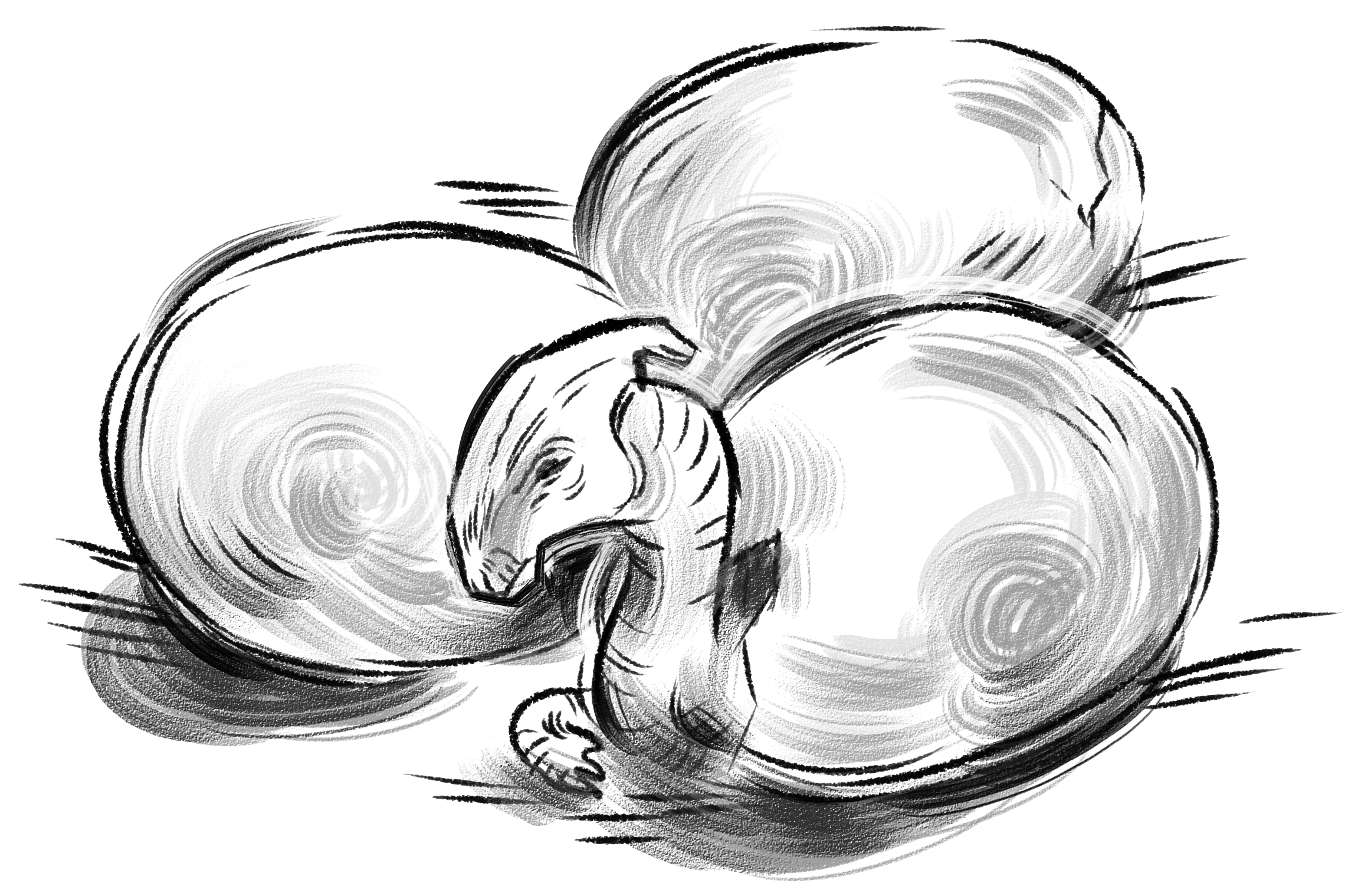For some, any knowledge of dinosaurs comes directly, and solely, from the Jurassic Park films. But evolution and the dinosaurs are also topics that U of T’s own professors are leading experts in.
U of T organized a series called Exploring Evolution: four presentations given by our very own researchers and professors that explain the importance and immense influence of evolution. The series explores topics such as electric fish in the Amazon, the Peruvian rainforest, and baby dinosaurs from South Africa.
I had the good fortune of attending one of those lectures on November 26, in the North District library, titled “Eggs Nests and Baby Dinosaurs: New Discoveries from South Africa.” The crowd of about twenty people was excited to learn about Dr. David Evans’ experience uncovering extremely rare and valuable fossils, especially since he’s a young native Torontonian. It was refreshing to see the crowd full of eager faces of all ages, from eight to 85 years old.
As the lights dimmed and the slideshow began, Evans showed us pictures of some of the oldest fossilized dinosaur eggs in the world. He began by modestly explaining, “I’m going to tell you the story of how we sort of serendipitously […] came across the oldest dinosaur embryos and that led us to discovering the oldest dinosaur nesting site. It gave us all sorts of very interesting insights into the evolution of dinosaur reproductive behaviour.”
To the untrained eye, these fossils just looked like rocks, but Evans clearly explained the dead giveaways of identifying an egg — minuscule cross-sections of where the eggs cracked during fossilization.
Amazingly enough, it was when Evans had almost given up and was casually skipping tiny pebbles around the site, that he found the first egg. “I reached back, pulled a rock out of the cliff, and thankfully, I looked at it before I threw it, and believe it or not, honest to goodness, this actually happened, it was a full, complete dinosaur egg. It was the perfect skipping size!” he laughed.
As Evans went on to explain his long and tedious journey in South Africa, it became more and more apparent that it was the incredible skill set of his team that allowed them to find such rare fossils, and successfully preserve them. From these simple preserved organisms, entire reproductive habits were deduced. For example, in one slab of rock, footprints of tiny dinosaur babies were found in the once-wet mud. Since the footprints in the mud were much bigger than newborn foot prints, it was deduced that these dinosaurs cared for and nested their young in a similar way to reptiles and birds.
The ease and modesty with which Evans explained his work in South Africa was inspiring to all curious minds in the room. The dedication and patience required to be a paleontologist may be unattractive, but the fact that Evans is the curator for the Ultimate Dinosaurs: Giants from Gondwana exhibition at the Royal Ontario Museum should clearly show the massive reward for a skilled paleontologist’s hard work.
Though evolution is a fact, it is still a controversial issue. Many of those who deny it claim that it takes the magic and wonder out of nature. If only it was widely agreed upon that the beauty and awe-inducing process that is evolution is even more magical than a fairytale, we could all nerd-out together.


